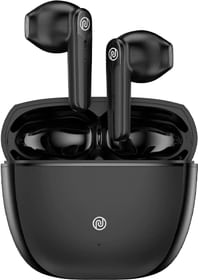In 2019, we have blazing fast 7nm chipsets with fast processing cores and incredible graphics, and even dedicated AI, AR engines. The performance of your phones, however, is dependent on a number of factors and the quality of the storage is an important one that can have a huge impact, especially in the long run.
UFS 3.0 specs were published by JEDEC early last year, but it’s only this year that we will see the storage make it to real-world devices. We are already hearing rumors of the next OnePlus flagship employing UFS 3.0 storage, and it won’t surely be the only one.
What is UFS 3.0?
Typically, smartphones and tablets have used older and cheaper eMMCs storage to store information. However, starting with the Samsung Galaxy S6, we have been seeing Universal Flash Storage (UFS) on flagship smartphones.
UFS 3.0 basically incorporates support for the latest high-density NAND memories and supports the latest and smarter interconnects between your phone’s chipset and memory for faster and more reliable communication between the two.
Overall, UFS 3.0 storage could almost double data bandwidth while consuming lesser power. These storages can also withstand a higher temperature range (-40°C to 105°C) which makes them more suitable for automotive applications.
Another important UFS 3.0 feature is support for multiple RPMBs (replay protected memory block) with multiple RPMB keys. RPMBs are hardware partitions used for securely storing critical data like user billing information, DRM content protection keys, etc. RPMB regions are fixed at manufacturing and are also configurable at manufacturing.
How is UFS better than eMMC 5.1?
eMMC, or embedded multimedia card, is a go-to memory solution for many consumer electronics, including tablets, smartphones, GPS systems, eReaders, and other mobile computing devices. Then, UFS came into the scene which is an advanced solution in comparison to eMMC. It has faster sequential read speed, sequential write speed, random read speed, and random write speed.
UFS touts a considerable improvement in performance due to the following reasons:
- UFS can read and write simultaneously
- Multiple commands can be addressed at the same time and the order of tasks can be changed accordingly.
UFS 3.0 vs. UFS 2.1 Speed Difference

Theoretically, it would propel a 2X increase in speed as it’s designed for twice the bandwidth of the current UFS 2.1 standard. This facilitates a transfer speed up to 11.6 Gbps per lane and since there are two channels, a hyper-speed of 23.2 Gbps can be reached. But practically speaking, we could expect a speed of around 15 Gbps (1.875 GB/s).
Moreover, these communication channels between the chipset and storage will be relatively better trained to handle consistent application workload because of the additional QoS (Quality of Service) feature.
It is optimized for significant reductions in device power consumption and this will make flash storage more reliable at a greater range of temperatures. So, now you can capture a 4K and even 8K video without troubling the handset too much.
ALSO READ: DynamIQ vs big.LITTLE Architecture – What has changed?
But, exactly how fast are UFS 3.0 phones?

UFS 3.0 storage phones are available in the market and we have a better idea regarding how much of a difference they make to the end-user experience. And the answer is that the impact isn’t as significant in every case.
But yes, UFS 3.0 phones are noticeably faster when it comes to reading or writing large chunks of data from or to the storage. Such use cases include installing games or when you are moving a large file or folder from or to your phone.
It must also be kept in mind that not all UFS 3.0 phones are equal. For instance, UFS memory on Samsung’s Note 10 Plus is significantly faster than that on the OnePlus 7 Pro.
UFS 3.1 vs UFS 3.0
JEDEC has also published UFS 3.1 standards that should help make high-capacity UFS storage cheaper and reduce power consumption. This is achieved with the help of new features include Deep Sleep mode, Write booster and Host Performance Booster that has earlier been used to improve the performance of SSD storage.
We already have two interesting implementations. iQOO 3 uses UFS 3.1 storage and Realme X50 Pro uses UFS 3.0 with Write Booster and Host Performance Booster – two important improvements in UFS 3.1 used for improved Random Read and Random write speeds.
We had the two phones at hand and here is how they performed on the CPDT benchmark:

As you can see, Realme X50 Pro 5G gets comparable speeds to UFS 3.1 but it isn’t leveraging Deep Sleep and thus the storage might not be as power efficient. UFS 3.1 speeds are significantly higher than UFS 3.0 speeds of Galaxy Note10+ shown in the image above. Find more details.
And lastly, here are the phones with both the latest UFS storages:
List of best phones with UFS 3.0 storage
The first phone to be announced with UFS 3.0 storage was Galaxy Fold. However, the OnePlus 7 Pro was the first UFS 3.0 storage phone to hit retail shelves.
- Samsung Galaxy S20 Ultra, Galaxy S20, and Galaxy S20+
- Samsung Galaxy Note 10 and Note 10 Plus
- Samsung Galaxy Fold
- Asus ROG Phone 2
- Realme X50 Pro 5G
- OnePlus 7/7 Pro, 7T/ 7T Pro
- OnePlus 8, 8 Pro
- Realme X2 Pro
- Vivo Nex 3 5G
- Nubia Red Magic 5G
- BlackShark 3, 3 Pro
- Motorola Edge+
- Xiaomi Mi 10, Mi 10 Pro
- Oppo Find X2, X2 Pro
- Sony Xperia 1 II
List of best phones with UFS 3.1 storage in 2021
- Samsung Galaxy S21, S21+, S21 Ultra
- Samsung Galaxy Note 20, Note 20 Ultra
- Samsung Galaxy S20 FE
- Xiaomi Mi 10T Pro
- Xiaomi Mi 11, Mi 11 Ultra
- Xiaomi Mi 11X Pro, Mi 11X
- OnePlus 8T
- OnePlus 9, 9 Pro, 9R
- Asus ROG Phone 5
- Poco F2 Pro
- Realme X50 Pro Player Edition
- Realme GT 5G
- Lenovo Legion Duel 2
- iQOO 7, iQOO 7 Legend
- Vivo X60, Vivo X60 Pro, Vivo X60 Pro+
- Oppo Reno 5 Pro+
- Huawei Mate 40
That’s it for now. In case we have missed any phone, let us know down in the comments.



































IQOO Z5 5G having UFS 3.1 Storage